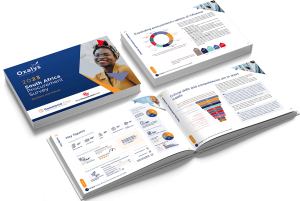 The current outbreak of Ebola is the largest and most complex since its discovery in 1976, exceeding the sum of all previously identified cases.
The current outbreak of Ebola is the largest and most complex since its discovery in 1976, exceeding the sum of all previously identified cases.
In October 2014, The World Health Organisation announced that there could be 10 000 new cases of Ebola per week and the current outbreak’s mortality rate had increased to 70%.
What was considered West African problem became a global concern with cases being treated in Europe and America, some of them resulting in fatalities. While there is a concerted effort to contain the outbreak, the international president of Médecins Sans Frontières, an NGO working in the affected regions, said earlier that “six months into the worst Ebola epidemic in history, the world is losing the battle to contain it.”
The question that businesses need to ask themselves is what could they learn from this experience, says Suresh Somasundaram, Director of Business Network Marketing at SAP, in this month’s SmartProcurement.
Lesson 1: Lack of collaboration
There were numerous players involved in allowing the virus to get out of hand. Starting with the care givers, volunteers, NGOs, government departments, international bodies like the UN, WHO and IMF, donor agencies, developed economies, and the Pharmaceutical companies.
There was no collaboration between them.
Simple aspects like protective gear (gloves, body suits, protective tapes, body bags, disinfectants and research equipment) were in short supply, which, given that the virus spreads easily, prevented many more aid workers from stepping in. Protective gear is available across the world, but there was no visibility into the supply chain. The result: the outbreak became the epidemic that we are contending with today.
 Do businesses encounter such challenges? Yes! Think about the potential savings and business advantages that are missed when organisations lose out on the opportunity to collaborate with their suppliers, partners, influencers and customers. Imagine the lost opportunity to develop new products and bring them to market effectively.
Do businesses encounter such challenges? Yes! Think about the potential savings and business advantages that are missed when organisations lose out on the opportunity to collaborate with their suppliers, partners, influencers and customers. Imagine the lost opportunity to develop new products and bring them to market effectively.
Networks like Ariba, Alibaba, Amazon and eBay provide businesses with platforms to interact and engage with a wider community of sellers and buyers across the globe. Businesses need to leverage the power of such networks to partner better with their ecosystems. South Africa’s Sage Health Solutions is a great example of how businesses can leverage the power of a business network to ‘Collaborate without boundaries’.
Lesson 2: Missed opportunities for co-innovation
Developing a vaccine was the most crucial element for success. Vaccine development today is the bastion of a few large Pharmaceutical giants, some of whom actually have one in development for similar type of viruses and that could address the issue. Independent researchers have been working on this since 1976.
There were many health workers and care givers with deep and profound knowledge on Ebola who were tending to patients and who could share knowledge on the symptoms and infection behaviour. Leadership in bringing them together to jointly develop with promised returns could have helped reduce the testing phase and we might have had a vaccine on the ground before now.
Businesses are often caught up in their myriad working complexes, and internal egos. Innovation becomes an exclusive club in organisations, to which only a few are privy. More importantly, they miss the opportunity to look at the vast ecosystem, including their suppliers and other potential partners.
Until 2001, less than 10% of Procter & Gamble’s(P&G) new products involved external innovation partners. The consumer goods multi-national set a goal to increase this Collaborative Innovation to more than 50%. By 2008, it had exceeded that goal and its external partnering strategy – ‘Connect and Develop’ – had become a fundamental part of its business. The reason for its success was that P&G was open to any kind of partnership: individual inventors to launch products such as ‘Crest Spinbrush’; chemical suppliers to develop ‘Olay Regenerist’ creams; university spinouts on a line of probiotic supplements; and even with competitors like Clorox on the ‘Glad Press’n Seal’ plastic wrap. Today, P&G delivers R34.5-billion towards its annual sales growth through this network of outside collaborators. The Networked Economy is about bringing together people, businesses and new opportunities!
Lesson 3: Looking at the big picture
When the first Ebola death in the US was reported, many countries switched to panic mode, implementing extra screening at airports, isolation wards in hospitals and using additional resources. There are costs associated with all of these, not to mention the economic impact, which the World Bank estimates at $32.6-billion. If all of us had together pledged support, money, and resources there is a better chance that a working cure would be in hand by now.
Many times we have seen this happen in business. Classic examples like Kodak in photography, Nokia in mobile telephony, book publishing houses, music labels, print media, postal services… the list is endless. Many of these instances could have been different had they looked beyond their traditional environments. This could have been as simple as a different set of suppliers working on newer technologies, different partners disrupting the status quo or innovation in service delivery.
Today’s business environment is extremely challenging and is similar to the Ebola threat: economic uncertainties, geo-political conflicts in many parts of the globe and depleting natural resources all combine with aspects like globalisation and lead to increased interdependence among companies and new business models emerging every other day.
However, technology innovation is making the world a smaller place. There are more connected devices than human beings, which opens new routes to market. Companies like Airbnb and Uber are leveraging this ability to connect people and business, to create new business opportunities. This is truly the networked economy.
Businesses today have a great opportunity to connect, collaborate and co-innovate. If they do not they could end up facing the ‘Ebola’ in their business very soon!
An accomplished Marketer, Suresh has over 20 years of experience across industry domains. In his prior role, he was responsible for Healthcare & Public Services marketing and working with government agencies and ministries in technology adoption and e-Governance initiatives.
Ariba, a SAP company, is the world’s business commerce network.


























